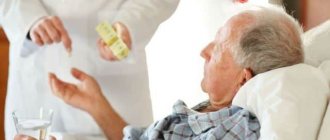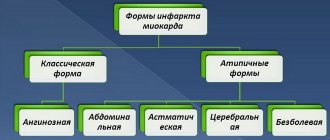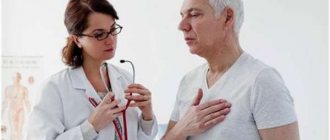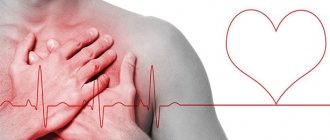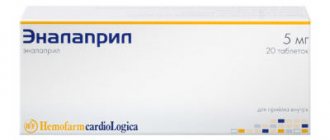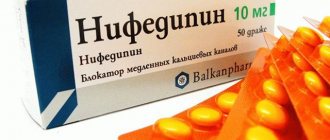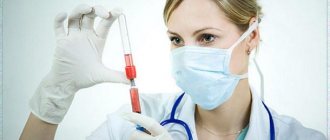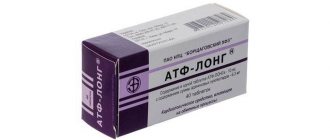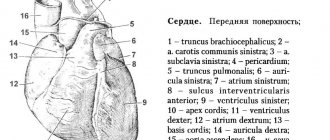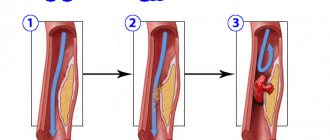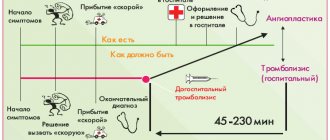Exercise therapy after myocardial infarction
Myocardial infarction is a common disease characterized by necrosis of heart tissue caused by poor blood supply.
The development of pathology is caused by blockage of arteries with a blood clot or narrowing of the walls. In order to speed up rehabilitation, it is recommended to undergo a course of exercise therapy after a myocardial infarction. The complex and frequency of repetitions are determined by the attending physician on an individual basis.
Exercise rules for patients on bed rest
This is the initial stage of rehabilitation, so maximum attention should be paid to it. In this case, no additional sports equipment, such as sports sticks or fitballs, is required. A set of physical therapy exercises after myocardial infarction involves the following actions:
- Breathing with the diaphragm is performed 4 times;
- slow unclenching followed by active squeezing of the fingers – 10 times;
- rotation of the feet with raised legs – up to 5 times;
- elbow bends – 4 times;
- leg bending (the exercise is performed in such a way that the feet do not come off the surface of the bed) – 4 times;
- pelvic lifting should be performed only under the supervision of a physical therapy instructor - 3 times;
- This is followed by a short rest, the purpose of which is to normalize breathing;
- bend your knees, placing your feet on the bed, after which you need to bring your knees in and out 5 times;
- the hand straightens to the side and returns to its original position (after this, this action is performed with the other hand, and so on 4 times);
- starting position - lying on your back, turns on your side (in the presence of an instructor) - 3 times;
- rotate the brushes 5 times.
It is very important to carry out the above steps without visible overexertion. In case of fatigue, it is imperative to rest, since any overload of the heart muscle is fraught with complications.
If the patient finds it difficult to perform the exercises, then he should consider increasing the comfort of the exercises. For example, you can arrange the pillows more comfortably or change the mattress. Each of the above actions should not cause discomfort when performed.
When can I start classes?
The period when you can start exercising directly depends on the degree of myocardial damage and the patient’s well-being. With moderate severity of the disease, exercise therapy can be started as early as 2-3 days . In more severe cases, you will need to wait about a week. The main principles when restoring physical activity are as follows:
- In the first days, you should adhere to bed rest;
- The patient is allowed to take a sitting position with his legs down from the bed onto the floor for 4-5 days ;
- 7 days after the attack, under favorable circumstances, the patient can begin to take his first steps around the bed ;
- After 14 days , the person can safely move around the ward;
- Starting from 21 days after the incident, it is advisable for the patient to walk more and can carefully go down the stairs.
You can use the table below to understand when and what you can do.
| Degree | Sick day | Mode | Permitted loads |
| 1A | 1st | Strict bed | The patient is in a supine position. Special exercises from exercise therapy are prohibited. He can only turn on his right side and eat food on his own. |
| 1B – 2A | From 2nd to 3rd | Bed extended | The patient can independently turn and sit up in bed, initially with the help of medical staff, and then independently. Later you can move to a chair. Exercises are allowed in a supine position, which are performed for 8-10 minutes. Breathing should be static. After each exercise you need to take a break. The pulse should not exceed 20 beats per minute. |
| 2B – 3A | From 4th to 14th | Ward strict | The patient can already walk around the ward and corridor at a distance of 20 to 200 m. Exercises performed in a sitting position are already allowed. The pace is slow or medium. |
| 3B | From 14th to 21st | Ward extended | The patient is already allowed to walk along the corridor without restrictions. Exercises are performed in standing and sitting positions, and can be either individual or group. |
| 4A and 4B (classes I, II, III and IV) | From the 21st | Free | Walking is acceptable, and the step speed is average - from 70 to 100 steps per minute. A set of exercises is performed in a sitting and standing position. |
When can you do exercise therapy after a heart attack?
A set of exercises after myocardial infarction (physical therapy - therapeutic physical culture) includes the sequential implementation of rehabilitation programs in a cardiology hospital, the rehabilitation department of a local sanatorium, and a community clinic.
In this regard, there are three stages:
- Stationary.
- Sanatorium-resort.
- Polyclinic.
Patients with MI at the inpatient stage are divided into 4 classes.
Based on this:
- course of the disease;
- severity of MI;
- complications;
- coronary insufficiency.
The timing of physical activity for myocardial infarction is determined by the severity class, which is determined after pain and complications have been eliminated, approximately 1-3 days (a little later in patients who have undergone coronary artery bypass surgery).
Timing of prescription of physical therapy for patients with myocardial infarction, depending on the severity class of the disease (days after the onset of the disease)
| Activity level | Gravity classes | |||
| 1st | 2nd | 3rd | 4th | |
| 1 A | 1 | 1 | 1 | 1 |
| 1 B | 2 | 2 | 3 | 3 |
| 2 A | 3 – 4 | 3 – 4 | 5 – 6 | 7 – 8 |
| 2 B | 4 – 5 | 6 – 7 | 7 – 8 | 9 — 10 |
| 3 A | 6 – 10 | 8 – 13 | 9 – 15 | To each separately |
| 3 B | 11 – 15 | 14 – 16 | 16 – 18 | To each separately |
| 4 A | 16 – 20 | 17 – 21 | 19 – 28 | To each separately |
| B and C | from 21 to 30 | from 31 to 45 | from 33 to 45 | To each separately |
Rules for performing exercise therapy
If myocardial infarction affected the patient for the first time, then the recovery process will begin after 3-4 weeks , if it is repeated after 5-6 weeks . Exercise therapy has some limitations. It is necessary to avoid stress during the period of exacerbation of the disease. However, after three days, if no deterioration has been noted, you can start exercising again.
You need to do the exercises 3-4 hours after eating. In order to avoid complications, it is necessary to avoid a sharp increase in load, even in conditions of good health. When implementing a complex of exercise therapy, the patient must certainly monitor his well-being. If during physical activity such unpleasant symptoms as shortness of breath, dizziness, tachycardia, or chest pain are observed, exercise should be stopped.
You should avoid sharp bends to the floor, as such actions provoke a rush of blood to the head. In addition, there is no need to perform strength exercises and activities that involve the use of rotational movements of the head or body.
How to do the exercises?
Charging must be carried out strictly according to the instructions. To do this, you should adhere to the following rules:
- You can’t suddenly increase the load level, you can’t run as hard as you can, and so on. Even if the patient’s condition is good and it seems to him that he will survive.
- If during the exercise the patient experiences weakness, malaise, shortness of breath, heart pain or something similar, then you need to stop. If the above symptoms do not go away in the patient, you need to take validol or nitroglycerin and call a doctor.
- Physical exercise for myocardial infarction is performed several hours after eating.
- Elderly people should avoid bending below the heart during exercise. Why? If they suffer from atherosclerosis or osteochondrosis, such bends can cause a sharp rush of blood to the head. It is also not recommended that they engage in strength exercises that require increased rotational movements of the head and torso.
These exercises are the answer to the question: is it possible to play sports after a heart attack? A careful, correct approach to exercise allows you to restore your health and play sports, provided that the loads and severity are reasonable.
Nurse-supervised exercises
Basic rules for performing exercise therapy for myocardial infarction
Therapeutic exercise can be recommended to the patient after getting rid of the main symptoms of the disease. Exercise therapy for myocardium promotes rapid rehabilitation and combats the consequences of a heart attack. The appointment should be carried out by a specialist who will select tasks in accordance with the patient’s health condition. Each person requires a unique approach as everyone experiences the disease and its effects differently.
A well-chosen set of classes helps restore lost skills and prevents the progression of the disease. An error in this case can significantly aggravate the situation and bring the patient to a situation where bed rest and taking medications will be the only way to solve the problem.
Contraindications for exercise therapy
The importance of physical therapy for heart disease is difficult to overestimate. However, not everyone can use it during the rehabilitation period.
It is prohibited for patients who have the following health problems to engage in therapeutic physical activity:
- Severe stage of circulatory pathology;
- Increased heart rate (more than 110 beats per minute at complete rest);
- Labored breathing;
- Swelling of the lungs;
- Changes in heart rate uncontrolled by medications;
- Cardiogenic shock;
- Severe pain in the heart area;
- Elevated body temperature and blood pressure;
- Poor ECG results.
Note!
Any ailment should be regarded by the patient as a contraindication to training.
Set of exercises
Often during the rehabilitation period after a myocardial infarction, patients are prescribed various workouts that help restore strength and health. In exercise therapy, various sets of exercises are often used.
- In a standing position, the patient places his feet shoulder-width apart, while he extends his arms along the body. Having taken the correct position, you need to point your arms up and pull yourself up, while inhaling. At the next stage, the person exhales, lowering his arms and describing a circle. The number of repetitions is from 4 to 6 times .
- The next exercise is also performed standing. The toes should be spread apart and the hands should be placed on the belt. Next, you need to turn to the left and spread your arms to the sides while inhaling. Afterwards, exhale returning to the original position. In the same way, you need to make the required number of approaches by turning to the right. The number of repetitions is from 4 to 6 times .
- Having taken a vertical position, the arms are fixed along the body, and the legs are placed shoulder width apart. Inhalation is performed. Then the person squats and bends forward slightly, moving his arms in the opposite direction and exhaling. The number of repetitions is from 4 to 6 times .
- The patient is in the same starting position as in the previous exercise. Exhales deeply, the person places his hands on the thighs and squats. Then, when returning to the original position, inhale. The number of repetitions is from 3 to 4 times .
- The patient will need a chair. He should sit down leaning on the back, grab the seat and stretch his legs - this is the starting position. Next, you will need to bend your head back and inhale. Afterwards, return to the previous position by exhaling. The number of repetitions is from 3 to 4 times .
Physical activity and properly selected medications give good results. In addition, during the rehabilitation period, after consultation with the doctor, fitballs, balls and gymnastic sticks can be used when performing exercises.
Approximate sets of therapeutic exercises for patients with myocardial infarction
Complex No. 1
IP lying down.
- Flexion and extension of the fingers 6-8 times. Breathing is voluntary.
- Flexion and extension of the feet 6-8 times. Breathing is voluntary.
- Bending your forearms, elbows to the sides - inhale, straighten your arms and lower them along your body - exhale (2-3 times).
- Hands along the body, turn your palms up - inhale. Raising your arms forward up, palms down, stretch them to your knees, raising your head, tensing the muscles of your torso and legs - exhale. (2-3 times). During the first lesson, you don’t have to raise your head.
- Calm breathing for 20-15 seconds. Relax.
- Alternately bending the legs without lifting them from the bed – 4-6 times. Breathing is voluntary, from the second or third lesson, bend and straighten your legs simultaneously - one leg bends, the other unbends.
- Arms along the body, legs straightened and slightly apart. At the same time, rotate the arms and legs outward - inhale, inward - exhale. Return to IP – inhale. Do the same with your left hand to your right knee (4-5 times).
- Lower your legs, bent at the knee joints, onto the bed to the right and then to the left. Breathing is arbitrary (4-6 times).
- The legs are bent at the knee joints. Raise your right hand up - inhale, stretch it to your left knee - exhale. Return to IP – inhale. Do the same with your left hand to your right knee. (4-5 times).
- Legs straightened. Take your right arm and left leg away from the bed at the same time, turn your head to the right - inhale. Return to IP – exhale. The same with the left hand and. with your right foot, turn your head to the left (3-5 times).
- Calm breathing for 30-40 seconds. Relax.
- Bend your arms at the elbow joints, clench your hands into fists, and straighten your legs. Simultaneous rotation of the hands and feet 8-10 times. Breathing is voluntary.
- Legs are bent at the knees. Straighten your right leg up, return to IP. The same with the left leg (4-6 times). Breathing is voluntary. This exercise is included from the third or fourth lesson.
- Legs are straightened and slightly spread, arms along the body. Place your right hand on your head - inhale, touch your right foot to the opposite edge of the bed - exhale. The same with the left hand (3-4 times).
- Hands along the body. Alternate moderate static tension and relaxation of the gluteal muscles, muscles of the lower extremities and pelvic floor for 2-2.5 seconds. When relaxing, inhale; when tense, exhale. Repeat 4-5 times. This exercise should be started from the second or third lesson.
- Hands along the body. Raise your hands up - inhale, return to IP - exhale. Repeat 2-3 times.
Complex No. 2
IP sitting on a chair.
- Lean against the back of a chair, hands on your knees, do not strain. Hands to your shoulders, spread your elbows to the sides - inhale. Return to IP – exhale (4-5 times).
- IP - the same. Roll from heels to toes with legs apart, simultaneously clench and unclench your hands into fists. Breathing is arbitrary (10-15 times).
- Hands forward up - inhale. Return to IP – exhale (2-3 times).
- Sliding the feet forward and backward on the floor. Breathing is arbitrary (6-8 times).
- Spread your arms to the sides - inhale. Return to IP – exhale (3-5 times).
- Sitting on the edge of a chair, move your right arm and left leg to the side - inhale. Return to IP – exhale. The same with the left hand and right leg (6-8 times).
- Sitting on the entire seat of the chair, lower your arms along your body, raising your right shoulder up, at the same time lower your left shoulder, then change the position of your shoulders. Breathing is arbitrary (3-5 times).
- Spread your arms to the sides - inhale. Using your hands, pull your right knee to your chest – exhale. The same with the left knee (4-6 times).
- Hands on the belt. Circular rotations of the head first to the right, then to the left 3-5 times in each direction. Breathing is voluntary.
- IP - the same. Place your right leg on the knee of your left leg - exhale, return to IP - inhale. The same with the left foot (3-5 times).
- Calm breathing for 20-30 seconds.
- Exercise therapy and massage for atherosclerosis and angina pectoris
- Exercise therapy and massage for hypertension and primary arterial hypotension
Breathing exercises
During the recovery period after myocardial infarction, the use of breathing exercises is of great importance. This method of treatment should not be underestimated, because a carefully selected load has a positive effect on the healing process and facilitates rehabilitation.
Breathing and using the diaphragm:
At the same time, experts warn that you should not get too carried away with such activities, since the wrong approach to therapy can cause considerable harm to the body, provoke an increase in blood pressure and lead to overload of the joints.
There are specially created sets of exercises for patients who have had a heart attack. These activities enrich the heart and blood vessels with oxygen, and also bring the desired relief to a person.
Rehabilitation
Rehabilitation after myocardial infarction and stenting takes place in two stages. The first stage takes place in a hospital setting, and the second at home:
Stationary stage
At this stage it is important to achieve the following tasks:
- activate the patient’s peripheral blood circulation;
- help the patient’s psyche adapt;
- reduce tension in segmental muscles;
- increase respiratory function;
- launch the systems responsible for counteracting the patient’s blood clotting;
- prevention against disruptions in the gastrointestinal tract, muscle hypertrophy, pneumonia and arthrosis in the left shoulder joint;
- increase the patient’s resistance to heavy loads in order to further get used to everyday everyday activities;
- increase the collateral of the myocardium, capillary bed and normalize trophic processes.
Patients involved in these tasks receive results depending on the extent of the infarction and its complications.
If there were no significant problems, then by the end of the inpatient phase the patient will be able to independently climb the stairs to the 1st floor. He will be able to take care of himself and take 3 km walks every day, divided into 2-3 parts. In this case, the human body will not experience any inconvenience.
Home stage
Patients discharged from the hospital after a heart attack and stenting must undergo rehabilitation in a clinic or sanatorium. There, to achieve good results, they pay attention to sports. To do this, the patient periodically exercises on a sports machine. He has to run on a treadmill and use an exercise bike.
This approach has the following goals:
- the patient must learn to bear loads;
- he must adapt to his present condition;
- secondary prevention is carried out;
- the number of medications taken is reduced.
Correctly completing these 2 stages will allow you to reduce the negative consequences of the illness, adapt to your current condition and return to normal life.
Exercises in the gym
Contraindications
Any therapeutic exercises after myocardial infarction have a list of contraindications. Exercise therapy is not used in the following cases:
- The patient experiences pain in the heart area;
- Irregularities in heart rhythm are detected;
- Feverish conditions are alarming;
- Pulmonary edema is present;
- There is acute cardiac circulatory failure;
- Poor electrocardiogram readings were revealed.
Doctors often do not prohibit doing finger exercises. Example exercises could be:
source
Start of classes
Therapeutic exercises after a myocardial infarction in a patient should begin at a strictly defined time. The onset of this time is determined by the attending physician. It relies on the following data:
- severity of the patient's condition;
- development of the disease;
- patient's age;
- floor;
- physical state.
When the totality of indicators meets the standards, you can begin classes. Contraindications to exercise therapy after myocardial infarction are temporary factors. If an exacerbation occurs, then you cannot exercise for the first days. After 3 days, an examination is carried out, and if there are no complications, rehabilitation resumes.
Patients perform physical activity after a heart attack while in bed for the first time. They begin to perform them after about 3 weeks. But this is only if the heart attack was the first.
In cases where this is a repeated or severe heart attack, a set of exercises begins after at least 5 weeks.
Set of exercises
Objectives of physical therapy in acute myocardial infarction
Rehabilitation of patients with myocardial infarction begins from the first days of their hospital stay. Carried out with the help of exercise therapy, it solves a number of important problems [3,16,43,63]. These include:
b Creation of conditions that reduce the hemodynamic load on the heart.
b Correction of the patient’s psycho-emotional state.
b Prevention of thrombosis of small branches of the pulmonary artery.
b Normalization of the function of the autonomic nervous system.
b Teaching the patient the correct type of breathing.
b Increasing the oxygen capacity of the blood.
b Normalization of protein and nitrogen metabolism, prevention of muscle hypertrophy.
b Improvement of central hemodynamics, moderate stimulation of blood circulation.
Reducing the hemodynamic load on the heart is achieved by choosing the initial position of the patient in bed with the head end elevated to 45º, using extracardiac factors (work of skeletal muscles, diaphragmatic breathing). In this position, the minute and stroke volume of blood and pulse pressure decrease, but at the same time the total peripheral resistance increases and the orthostatic stability of the body decreases. These changes persist in the immediate (7-10 days) period after significant restriction of physical activity.
Thanks to the work of small muscle groups and passive actions involving the muscles of the limbs, a “muscle pump” operates and thereby improves blood transport from the periphery to the center. Low-intensity physical exercise increases the tone of peripheral vascular smooth muscles and also facilitates blood delivery to the heart.
Diaphragmatic breathing helps increase the suction function of the chest. By reducing the pressure in the chest cavity and increasing the pressure difference in the abdominal and thoracic cavities, the mechanical work of the heart, which ensures blood flow in the pulmonary and systemic circulation, decreases. An increase in pressure in the abdominal cavity leads to a decrease in blood stagnation in the liver and intestines, and prevents the development of cardiovascular failure and dyskinesia of the digestive tract. When the diaphragm rises upward, a mechanical massage of the heart occurs, especially its apex and posterior wall, which has a beneficial effect on coronary blood flow.
Exercise therapy classes create a positive background for a patient with myocardial infarction, instill in him confidence in a favorable outcome of the disease, help normalize cortical dynamics, equalize the ratio of the process of excitation and inhibition, and reduce the clinical manifestations of necrosis.
The work of the distal limbs is an effective means of preventing thrombosis of small branches of the pulmonary artery, since under these conditions microcirculation improves and the volume of circulating blood increases. Under the influence of physical exercise, the flow of impulses from proprioceptors increases. This is manifested by an improvement in the activity of the digestive tract, its motor and secretory functions. Physical exercise also helps normalize blood pressure levels, slow heart rates, and eliminate extrasystoles.
In patients, the upper thoracic type of breathing predominates. In this case, the lower parts of the lungs, as a rule, take a limited part in the act of breathing, which leads to the development of hypostatic pneumonia, impaired ventilation parameters and tissue hypoxia. The latter further worsens the supply of oxygen to the myocardium and, as a result, supports an attack of angina. Reducing its degree is the key to successful treatment.
Physical exercise helps to increase the oxygen capacity of the blood as a result of changes in the morphofunctional properties of red blood cells and a moderate increase in their number. The development of moderate metabolic acidosis under the influence of physical activity helps to increase the volume of red blood cells, which increases their oxygen transport capabilities. At the same time, the affinity of oxygen for hemoglobin also increases, which also helps to reduce tissue hypoxia.
In patients with myocardial infarction, the parameters of protein and nitrogen metabolism are changed. As a result of these metabolic disorders, the processes of regeneration of myocardial tissue slow down. Exercise therapy serves as a reliable means of eliminating these changes and preventing muscle wasting.
Improving central hemodynamics and moderate stimulation of blood circulation have a positive effect on coronary blood flow, which in turn helps limit the area of necrosis and speed up scarring.
Health restoration is carried out with strict adherence to the level of physical activity of patients. The following motor modes are distinguished
: in a hospital - strict bed, extended bed, ward, free; in the clinic and sanatorium - gentle, gentle-training, training, intensive training [47]. In table 1.2. The tasks of exercise therapy for various motor modes are given.
There are several forms of exercise therapy for large-focal myocardial infarction: therapeutic exercises, morning hygienic exercises, therapeutic walking, therapeutic walking on stairs, walks and massage. Therapeutic gymnastics is the main form of exercise therapy at all stages of rehabilitation of patients with myocardial infarction [3,26,28,38,41,45,69,72,75].
Table 2.2. Approximate tasks of exercise therapy for various motor modes
1. Reducing the hemodynamic load on the heart.
Physical education after a heart attack against the background of arrhythmia
Physical education for arrhythmia is prescribed only after a thorough examination by a specialized cardiologist. In some cases it is completely contraindicated:
- rhythm disturbances and an attack of anginal pain with light exertion;
- HF ІІ-ІІІ degrees;
- diabetes;
- heart defects;
- renal and liver failure;
- pressure > 160/90 mmHg;
- aneurysm of the heart and aorta.
Memo for patients with extrasystole (EX)
A patient with an pacemaker should remember that it is advisable for him to have a heart rate monitor and monitor the pulse rate, as well as stop any exercise if he feels unwell and the appearance of extrasystoles. Particular attention should be paid to ventricular pacemakers, since compared to sinus pacemakers they are more dangerous and can lead to the development of life-threatening arrhythmias. It is not recommended to engage in sports during extrasystole and fitness. However, there are permitted exercises after a heart attack at home:
- daily walks;
- morning warm-up (15 minutes);
- you can go swimming and cycling, but the loads must be limited in time;
- breathing exercises.
Hospital stage of rehabilitation
Modern approaches to the rehabilitation of patients with myocardial infarction (MI)
provide, on average, a 3-5 week hospital stage of rehabilitation treatment. The physical rehabilitation program for a patient with MI during the hospital phase is built taking into account his belonging to one of 4 severity classes.
The severity class is determined on the 1st-3rd day of illness after the elimination of pain and complications such as cardiogenic shock, pulmonary edema, severe arrhythmias.
This program involves prescribing a volume of physical activity to the patient in the form of therapeutic exercises. The main task of therapeutic physical culture (PT)
at the inpatient stage - activation of extracardiac circulatory factors, reduction of the negative impact of hospital physical inactivity, preparation of the patient for household physical activity.
Period of inpatient rehabilitation phase
The entire period of the stationary stage of rehabilitation is divided into 4 stages, with each of them subdivided into steps to individualize the selection of the daily load level and gradually increase it.
The 1st stage
of activity
covers the period the patient is on bed rest.
Therapeutic gymnastics (TG)
classes are carried out in the IP. lying in bed. Complex of therapeutic exercises No. 1 is used. During rest breaks, breathing exercises and relaxation exercises are performed. Lesson duration 10-12 minutes.
The load is considered adequate if the increase in heart rate at the height of the load and in the first 3 minutes after it does not exceed 20 beats per minute, the increase in breathing is no more than 6-9 per minute, the SBP increases no more than 20-40 mm Hg. Art., DBP - no more than 10-12 mm Hg. Art. (compared to the original).
Perhaps a decrease in heart rate by 10 beats per minute, a decrease in blood pressure (BP)
no more than 10 mm Hg. Art. If the body reacts adequately to the complex of therapeutic exercises, there are no attacks of angina pectoris and no new complications, or negative dynamics of the ECG, the patient is transferred to the 2nd stage.
At the 2nd stage
of activity
, the patient is allowed to sit down at the table, eat at the table, walk around the bed and around the ward. The load is performed within the framework of LG complex No. 2. The main purpose of the complex is gentle training of the cardiorespiratory system, preparing the patient for free walking along the corridor and climbing stairs.
Therapeutic gymnastics complex No. 2 is performed in IP. lying down - sitting - lying down. The number of exercises performed while sitting gradually increases. Movements in the distal limbs are gradually replaced by exercises in the proximal limbs, involving large joints and muscle groups in movement.
Each change in body position is followed by passive rest. Exercises of the LH complex No. 2 are recommended for patients to practice independently in the form of morning hygienic exercises. Lesson duration 10-15 minutes.
Sets of exercises that cause ST segment depression, rhythm disturbances, or the development of tachycardia over 100 beats per minute are excluded from the program or a more gentle option is selected. Indications for transferring the patient to the 3rd stage of activity are an adequate response of pulse and blood pressure, orthostatic test, the approach of the ST segment to the isoline, the formation of a coronary T wave.
Contraindications to transfer to the 3rd stage of activity are frequent attacks of angina pectoris, signs of circulatory failure at the stage and above, frequent paroxysmal rhythm and conduction disturbances with pronounced hemodynamic changes.
3rd level of activity
includes the period from the first time the patient enters the corridor until he goes outside. The patient is allowed to walk along the corridor from 50 to 200 m in 2-3 steps at a slow pace (up to 70 steps per minute), up the stairs within 1 flight.
The main objectives of therapeutic exercises at the 3rd stage of activity: preparing the patient for full self-care, going for a walk outside, and dosed walking in a training mode. LH is carried out in the initial position sitting and standing, gradually expanding the volume of loads within the framework of the complex of therapeutic exercises No. 3.
What sports and how to do them?
First degree of activity (strict bed rest, perform slowly, after pain and complications disappear):
Light movements of the limbs.
- Muscle tension in the limbs and torso.
- Static breathing.
Measures of adequacy:
- Increase in Ps by no > 20 beats/min.
- Breathing is not > 6-9 r/min.
- Systolic blood pressure is 20-40 mm. rt. Art., diastolic by 10-12 mmHg.
- Decrease in Ps by 10 beats/min, decrease in blood pressure by no more than 10 mmHg.
Second degree of activity (ward mode, 2A – lying on your back, 2B – near the bed, then around the ward):
- Morning exercises.
- You are allowed to eat and sit at the table.
- Breathing exercises.
Third degree of activity (first exit into the corridor before going outside):
- 50 – 200 steps in 2-3 steps, slowly (70 per minute) along the corridor (3A), using a shared toilet).
- Unlimited hallway walks.
- Full self-service.
Fourth degree of activity (preparation for transfer to a sanatorium, adaptation to everyday life):
- Movements in large joints, back muscles, torso (30 - 35 minutes, slowly, with pauses, which take 25% of the class time).
Recommended sports
At the sanatorium stage, the patient should be recommended, first of all, health-improving therapeutic exercises. It uses: gymnastic sticks, balls, dumbbells, a bench, hoops, elements of games, as well as some sports: swimming, skiing, rowing, dosed running, sports games, bicycle ergometer. If the patient is a former athlete, training in the previous intensive mode is now contraindicated for him.
Gymnastics at home
At the dispensary and polyclinic stage, long-term loads are suitable. You can start using them in 3-4 months. after MI. Before starting, it is imperative to determine a person’s capabilities using: bicycle ergometry, spirography, clinical data. Regarding their results, the patient can be classified into a certain functional class: 1 – 2 strong group, 3 – weak.
Physical therapy after a heart attack at home:
Stage I (2-2.5 months):
- individual exercises 6-8 times;
- walking on the sides of the feet, heels, toes (15-20 sec.);
- walking (120 steps/min., 4 min.);
- running 120-130 steps/min;
- ski step, walking with high knees 1 min;
- elements of sports games.
Similar physical therapy after myocardial infarction is performed at home 3 times a week, lasting up to 10 minutes. If the patient feels discomfort, he should rest for a while or completely stop the exercise.
